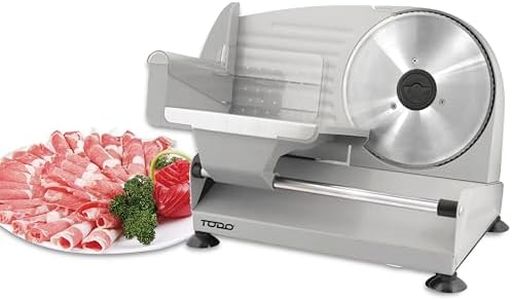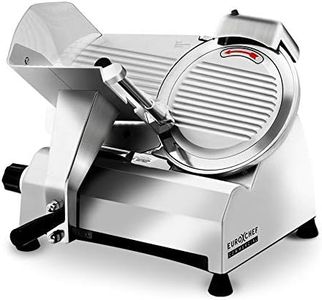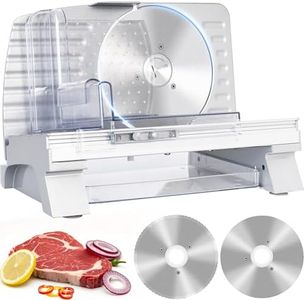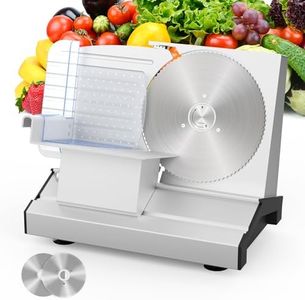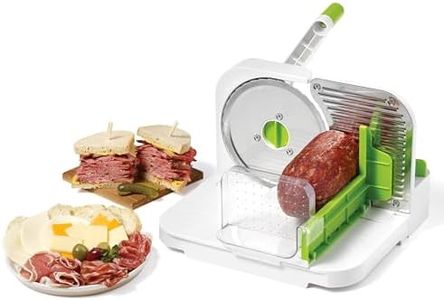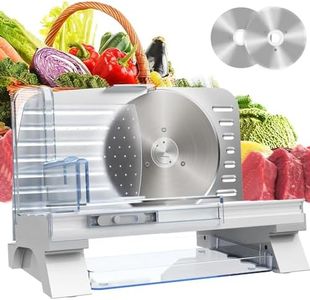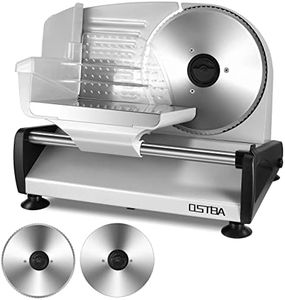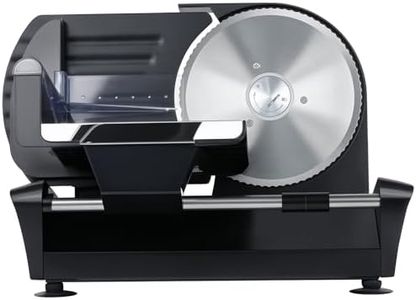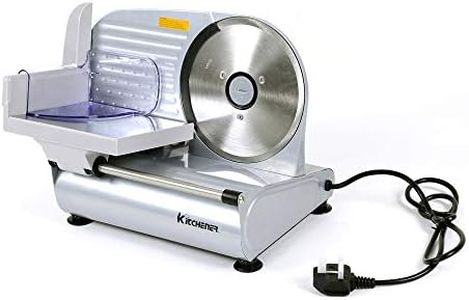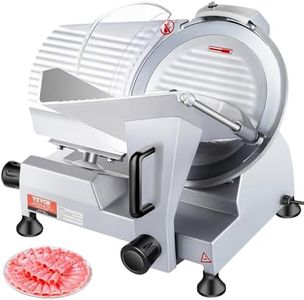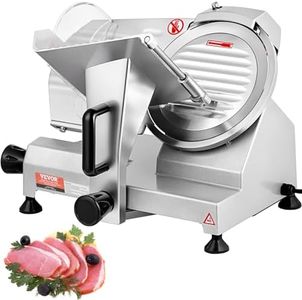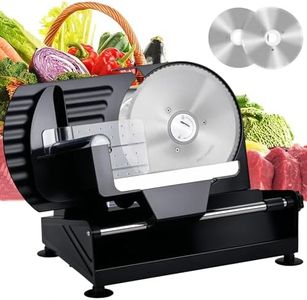We Use CookiesWe use cookies to enhance the security, performance,
functionality and for analytical and promotional activities. By continuing to browse this site you
are agreeing to our privacy policy
10 Best Home Meat Slicers
From leading brands and best sellers available on the web.Buying Guide for the Best Home Meat Slicers
Choosing the right home meat slicer can make food preparation quicker, easier, and more consistent, whether you want deli-style cuts or thin slices for sandwiches. To find the slicer that best suits your needs, it’s important to understand the different features and specifications available. By considering how often you’ll use it, what types of food you plan to slice, and your kitchen space, you can narrow down the options and select a slicer that will serve you well for years to come.Blade SizeBlade size refers to the diameter of the cutting blade, typically measured in inches. A larger blade can handle bigger cuts of meat and offers more versatility, while a smaller blade is often easier to store and control. Blades around 7 to 9 inches are common for most home uses, offering a balance between manageability and functionality. If you plan to slice large roasts or want to prepare food for gatherings, a larger blade is useful. For daily sandwiches or small cuts, a smaller blade may be the best fit.
Blade MaterialBlade material affects sharpness, durability, and ease of cleaning. Most home meat slicers use stainless steel blades, which resist rust and maintain an edge over time. Some advanced models offer coated or carbon-steel blades, but stainless steel is suitable for most needs. If you value easy maintenance and plan to slice a variety of foods (not just meat), a stainless steel blade is a practical choice.
Motor PowerMotor power, measured in watts, determines how easily the slicer cuts through different foods. Higher wattage means the motor can power through tougher cuts and extended use without overheating. Light use (occasional slicing of cheese or deli meats) can be handled with lower-powered motors, around 100 to 130 watts. For frequent or heavy-duty use, look for something with more power to ensure smooth performance and longevity. Consider your slicing habits—if you prepare large quantities or tougher meats, opt for a stronger motor.
Slice Thickness AdjustmentSlice thickness adjustment is the ability to control how thin or thick your slices are. Most home slicers allow adjustment from paper-thin slices up to about half an inch. The ease and range of adjustment are important, especially if you wish to create a variety of dishes. If you like to vary your slice thickness (for example, thin for sandwiches and thick for roasts), look for a slicer with a wide and easily adjustable range.
Safety FeaturesSafety features are essential to prevent accidents, especially with such sharp, fast-moving blades. These features may include blade guards, non-slip feet, and safety locks. The more robust the safety features, the safer the experience, particularly if you have children at home or are new to using slicers. Choose a model with clear, easy-to-use safety features if handling sharp tools makes you nervous or if safety is a top concern in your household.
Ease of CleaningThe ease of cleaning refers to how simple it is to disassemble and wash the slicer after use. Since food can get trapped in small spaces, being able to remove the blade and food carriage for cleaning is important for hygiene and maintenance. If you plan to use your slicer often, a model that is quick and easy to clean will save time and encourage regular use. Look for slicers with removable, dishwasher-safe parts and minimal crevices.
Size and StorageThe size and weight of a meat slicer affect where you can place and store it. Compact, lightweight models are easier to move and fit into smaller kitchens, while larger slicers offer greater slicing capacity but need more counter space. If kitchen real estate is limited, go for a more compact model. If you'll leave it out or need to process larger amounts at once, a bigger slicer may be the right fit.

